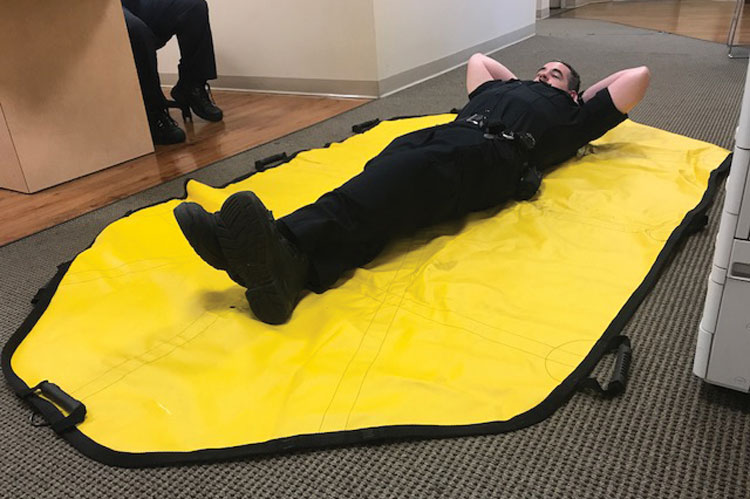
By JEFF KAPLAN
The many health epidemics within our population, whether heart disease, cancer, or HIV/AIDS, know no boundaries and have no end in sight. One health crisis that continues to grow at an alarming rate, yet one that receives far less attention, is our nation’s battle with obesity. The Centers for Disease Control and Prevention estimated in 2015 that more than one-third of the United States population was considered overweight or obese. Obesity-related illnesses include heart disease, stroke, type-2 diabetes, and certain types of cancer, all among the leading causes of preventable death. The estimated annual medical cost of obesity in the United States in 2015 was $147 billion.1
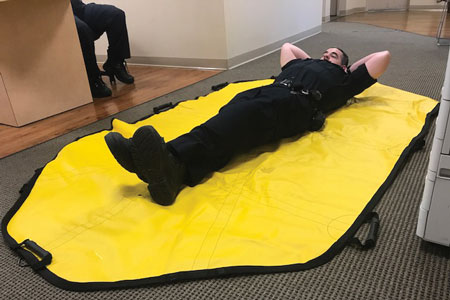 |
| Photos by author. |
How does this affect the fire/emergency medical services (EMS)? The dramatic increase in obesity has a direct correlation to the calls to which our agencies respond. As opposed to a person of normal weight, an obese (or bariatric) patient will likely suffer from a myriad of health and medical issues. In addition, a heavier patient will require more staffing to lift and move him safely. The chances for injury, not only to the patient but also to crew members, increase significantly as the patient becomes heavier. As a result, today’s fire/EMS agencies must be familiar with management of bariatric patients. Two important areas with which you should be familiar specific to bariatric care include complications in airway management and transport-related concerns.
The ABCs
As with any medical call, focus on the basics – the ABCs (Airway, Breathing, Circulation) – of patient management. Bariatric patients have less pulmonary reserve available; therefore, it is even more essential to maintain their airway, assist with their breathing, and support their circulation.
We must aggressively manage and secure the bariatric patient’s airway with an adjunct, whether it is an oropharyngeal or nasopharyngeal airway for basic life support (BLS) providers or an endotracheal tube or supraglottic airway for advanced life support (ALS) providers. Once an obese patient loses his airway, it is extremely challenging to resecure it. In fact, obesity alone is a demonstrated predictor of difficult bag-mask ventilation.
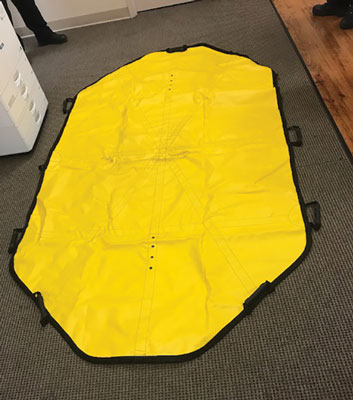
When breathing for the patient, we must be prepared for challenges. BLS providers should anticipate the need for an extra-large bag valve mask to provide an adequate seal. A two-person bagging technique is required to ensure a tight mask seal and adequate chest rise.
ALS providers should be prepared for a difficult intubation. The most important aspect of airway management is properly positioning the patient. Padding and shoulder positioning will assist the provider in visualizing the vocal cords, sometimes called the “sniffing maneuver.” Although rapid sequence intubation is an option, be sure that your unit carries enough medication to properly sedate and paralyze the patient based on his weight.2 Some experts recommend using video laryngoscopy as a first-line device to intubate a bariatric patient. If all else fails, be proficient in your alternative airway devices such as supraglottic devices. (1)
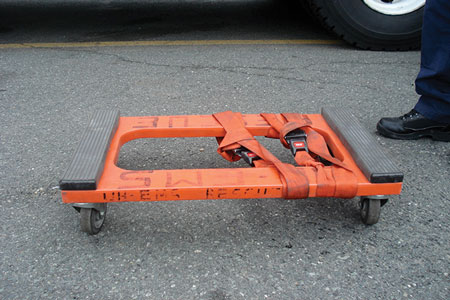
Circulatory support is also key. Providers may have difficulty determining baseline vitals. A morbidly obese patient may normally be tachycardic, hypertensive, and tachypneic. Ask yourself whether these vitals signs are normal for this patient or if they are signs of a serious underlying condition. Ensure that appropriately sized assessment tools and equipment are available. Simple tasks such as palpating a pulse can be challenging with a bariatric patient. To facilitate prompt reevaluation, consider marking the area with a grease pencil where the radial pulse was found. The use of a portable Doppler device can facilitate “listening” for a pulse when you cannot palpate one. When assessing a blood pressure, standard obese cuffs may not be large enough; a thigh cuff should be available. You may also need longer angiocatheters to effectively penetrate a thicker layer of subcutaneous tissue to establish IV access.
In patients where IV access may not be obtainable, alternatives such as intraosseous (IO) access may be required. Even with IO access, one must select an appropriately long needle.
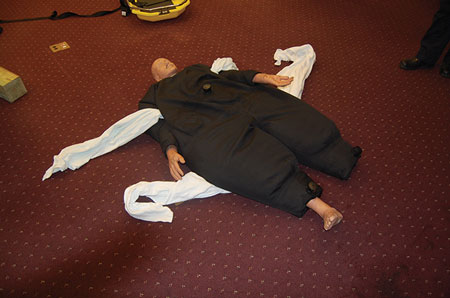
Finally, it is important to not let a patient’s size dictate your train of thought regarding his current condition. Why did he call 911? Was it an obesity-related problem or something unrelated?
Moving the Patient
Almost as soon as medical management of the patient starts, we must begin to formulate a plan, with combined effort from fire and EMS, to move the patient. Everyone must be on the same page once the move begins, and planning must include the ongoing requirements for medical care as well as patient/provider safety. Following is a series of questions that need to be asked to help formulate this plan:
- Where is the patient? First floor, second floor, bathroom? This will determine the tools and techniques you need for extrication.
- Do we need specialized resources? Like any rescue scene, we must be familiar with the tools at our disposal. If available, identify and request a bariatric ambulance. Although this tool was not in our toolbox 10 years ago, its arrival in the EMS world has made it safer and more secure to transport bariatric patients. Motorized adjuncts can help load patients into the ambulance without using as much manual force, substantially decreasing the risk of patient and provider injury.
-
How do we get from point A to point B? There are dozens of specialized pieces of equipment available to assist us in the removal of heavy patients. Some were designed with this purpose in mind while others were adapted for this purpose. Some of these options follow:
- What is essentially a bariatric moving tarp (photos 1, 2) is a good first-line tool to help lift and move bariatric patients. These “tarps” are available in a variety of sizes and weight capacities from several manufacturers and are relatively inexpensive, stored easily, and have a high weight capacity (around 1,500 pounds). They can assist providers greatly in removing patients from tight or enclosed spots – as long as there is enough staffing. If you don’t have access to these devices, another option is the rescue or stokes basket.
- Many lifting and carrying devices have high payloads, some as high as 2,500 pounds. If you need to use a rope system for lowering or belaying the patient from an upper floor, the basket provides the perfect platform on which to base this operation. Depending on the situation, a rope evolution might be the only option to safely remove the patient.
- You can also use a mover’s dolly (photo 3) to help roll rather than lift a patient. You can purchase this device at a local hardware store and place it under the rescue basket to roll rather than carry it to your ambulance. Plastic dollies have payloads of typically more than 1,000 pounds and cost around $25.
- You can also use several air-lifting systems to lift a patient off the ground to a rolling stretcher or bed. These systems can also “drag” a patient down flights of stairs to your ambulance. Depending on the application, they have capacities up to 1,200 pounds.
- You can wrap hospital bed sheets into “slings” (photo 4) and shimmy them under a patient to help lift him short distances onto a proper moving device. Commercially available devices can also accomplish a similar function. There are several new products on the market to help providers safely lift and move a patient while reducing the risk of injury to the patient and the provider. These products include harnesses (photos 5, 6) that go over the hips and legs with numerous handles that allow providers to maintain proper body mechanics while lifting heavy patients from a seated position.
- Finally, do not forget your rolling stretcher (photo 7). Major innovations have been made in this area over the years. Gone are the days of stretchers with 300-pound weight limits. Most cots now have 750-pound or more weight limits (photo 8). Check with your stretcher manufacturer to find out how much your stretcher can handle.
- How do we remove the patient from the building? The answer to this question will lead you to one of two strategies: interior or exterior evacuation. This can be a highly complicated rescue requiring proper planning and training. Be prepared to widen doorways, windows, and other areas of the home. Ramps may need to be constructed. Be sure to use specialized companies like rescue or urban search and rescue to conduct these technical evolutions. Have a list of contractors such as tow operators and crane or forklift contractors you may need for safely removing the patient.
Preserve Patient Dignity
One important aspect of the incident that is often overlooked is maintaining the dignity of the bariatric patient. A bariatric removal often tends to become a high-profile event necessitating multiple units and many hands. It is not unusual for the media or a significant number of bystanders to be present.
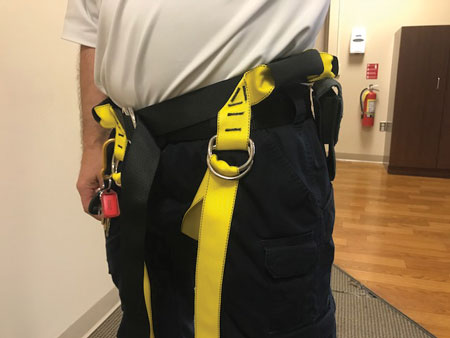
As you begin the operation to remove this patient from his home, be mindful that some of these patients are “shut-ins” and may be emotionally stressed, especially in an emergency. Company officers must set the tone to ensure that all members maintain their highest levels of professionalism, just as we would on any other call.
Guarantee that the patient’s dignity is maintained at all times. This includes keeping the patient covered, not allowing any pictures to be taken (including social media), and not permitting any rude or hurtful comments to be made in the presence of the patient.3
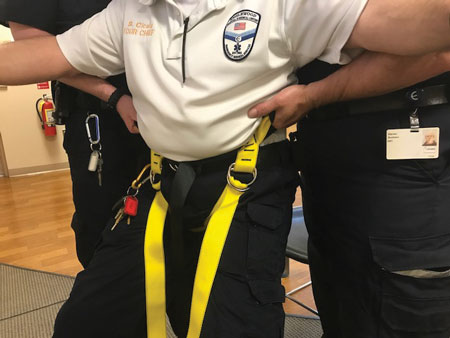
Transport
Once the patient is extricated, ask yourself where the patient will be transported. Not every hospital is equipped to handle a 600- or 700-pound patient. Preplanning is key. First, determine if hospitals in your response area specialize in treating bariatric patients. Some medical centers have created excellent bariatric centers and have dedicated specialized rooms – if not entire floors – of their facilities with larger doorways, beds, and lifts capable of handling obese patients. Transporting a bariatric patient to an ill-equipped facility will result in long wait-times while hospital staff scrambles to find an appropriate bed and room that can handle the patient, delaying care and drawing more unnecessary attention to an already distressed patient. In all cases, notify the receiving facility early so it can prepare resources in advance of your arrival.4
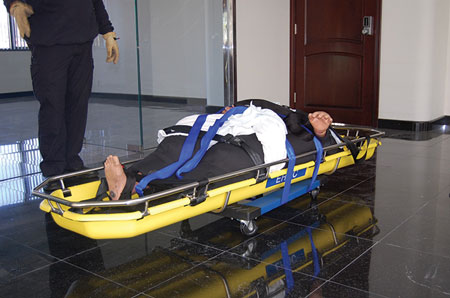
After Transport
Once the patient is at the receiving facility, a few final issues will require attention. Consider having responders meet the transport unit at the hospital to help offload the patient at the emergency department. Although it is true that hospitals have their own staff, they may not have sufficient personnel or proper training to handle the initial transfer of care for these patients. Be prepared to lend assistance as needed.
Finally, be prepared to temporarily remove the ambulance and assisting companies from available status for decontamination following the call. If the patient has contaminated responders with body fluids or other contaminants (e.g., bed bugs), units and their personnel will need time to clean and decontaminate themselves prior to returning to service.
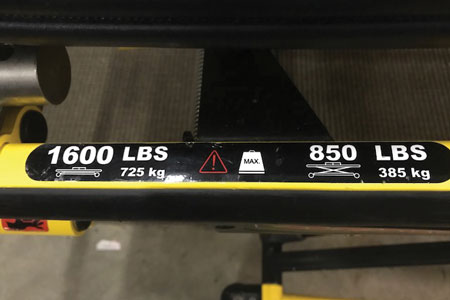
The bariatric rescue and removal is a difficult call that will challenge even the most seasoned responder, testing an EMS provider’s patient care skills with a challenging and difficult assessment. For firefighters, it will force you to think outside the box on how to safely and quickly remove the patient from his home without causing injury to him or responders. It requires a team approach, pre- and peri-incident planning, and appropriate postcall debriefing to identify areas for improvement. All of this must be done while maintaining the patient’s privacy and dignity. Given that the obese population is growing at a rapid rate, now is the time to train and prepare your agency to handle these complex and technical emergencies.
References
1. https://www.cdc.gov/obesity/data/adult.html.
4. Muir, M, Archer-Heese, G, (January 31, 2009). “Essentials of a Bariatric Patient Handling Program.” OJIN: The Online Journal of Issues in Nursing: Vol. 14, No. 1, Manuscript 5. Retrieved from: www.nursingworld.org/MainMenuCategories/ANAMarketplace/ANAPeriodicals/OJIN/TableofContents/Vol142009/No1Jan09/Bariatric -Patient-Handling-Program-.aspx.
JEFF KAPLAN is a captain with the Englewood (NJ) Fire Department. He is also a hazmat manager with NJ-TF1 – USAR and has numerous instructor credentials in hazmat and emergency medical services. He has written for several trade journals and has lectured on hazmat and emergency medical service topics throughout the country.
Treatment/Transport of Bariatric Patients
Bariatric Equipment For Obese Patients
Protecting Against Back Injuries
More Fire Engineering Issue Articles
Fire Engineering Archives
Originally ran in Volume 170, Issue 8.

